

Max Davies
2025 BYD Shark 6 review
5 Days Ago
The Air may be the cheapest Kia EV9, but this full-sized electric SUV is still over $100,000 drive-away. Is it worth the coin?
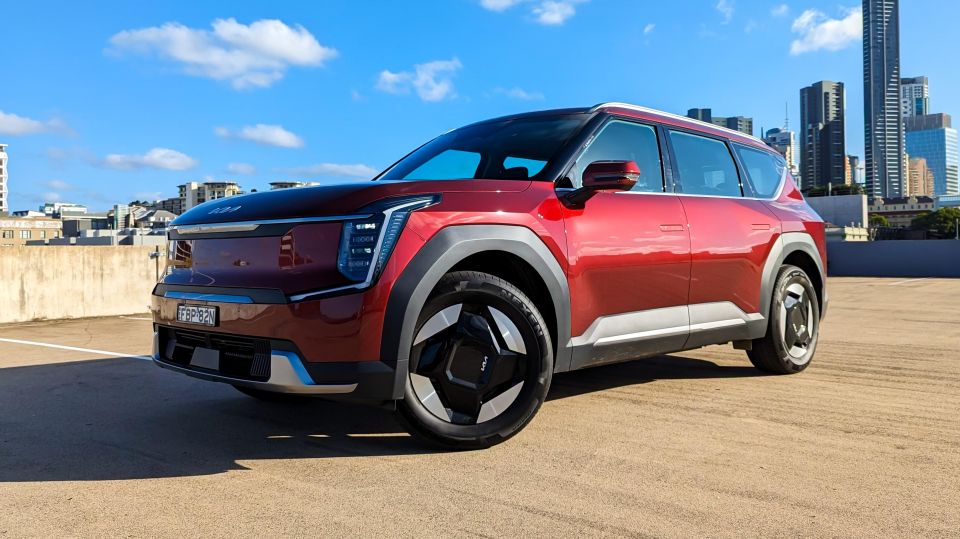
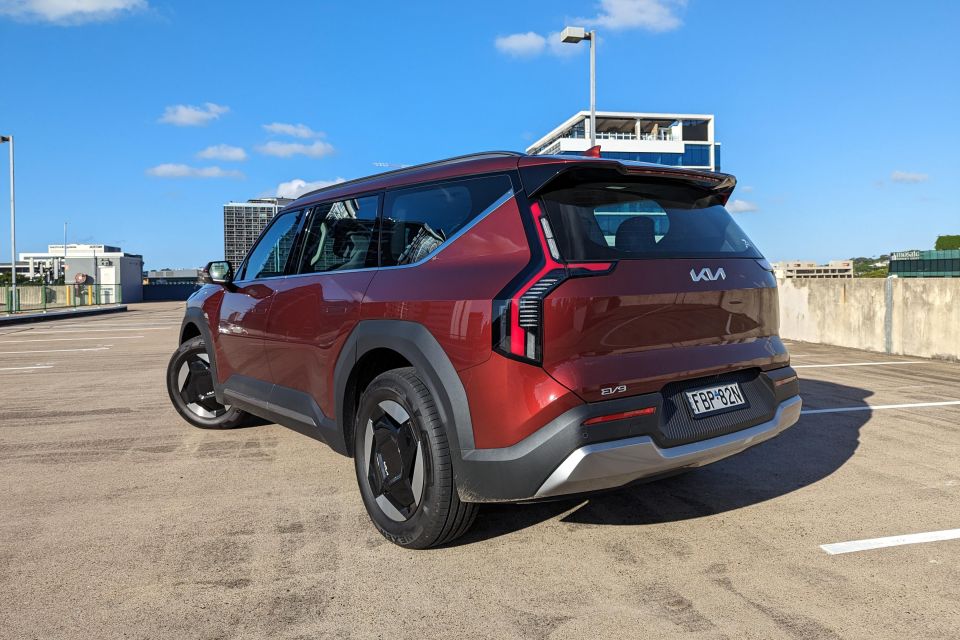

Quickly see how this car stacks up against its competition. Select any benchmark to see more details.
Where expert car reviews meet expert car buying – CarExpert gives you trusted advice, personalised service and real savings on your next new car.
Talk about a bold statement.

Kia’s third electric vehicle (EV) in Australia is this, the EV9.
Launched late in 2023 to join the smaller Niro and EV6, the EV9 is an electric SUV with a Toyota LandCruiser-sized body and a big price… at least for a Kia.
We’ve previously tested the mid-range Earth and top-spec GT-Line and come away largely impressed, but is it actually this entry-level Air that makes the most sense?
The Air may be the most affordable member of the Kia EV9 family, but this is still worth more than $100,000 drive-away.
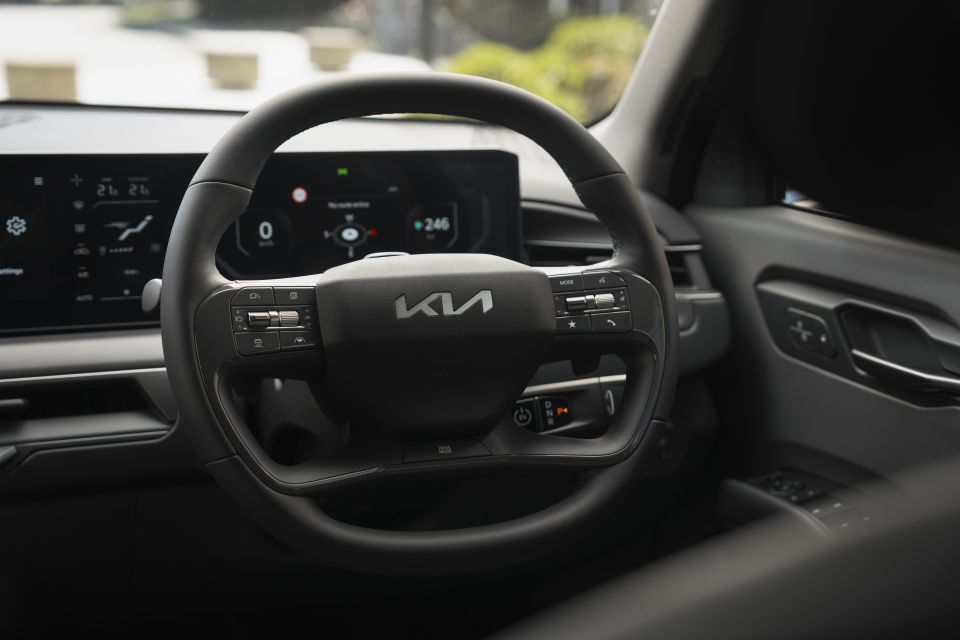
That’s a lot of money no matter the badge on the nose, although the EV9 still has essentially no direct competition – it’s one of just five vehicles on sale in Australia today to offer an electric powertrain and three rows of seating.
The others are the considerably smaller Mercedes-Benz EQB, the considerably more expensive EQS SUV, and two people movers: the LDV MIFA 9 and Mercedes-Benz EQV.
There are three members of the EV9 family, with the Air being the only one without all-wheel drive… and the only one to slide under $100,000 before on-road costs.
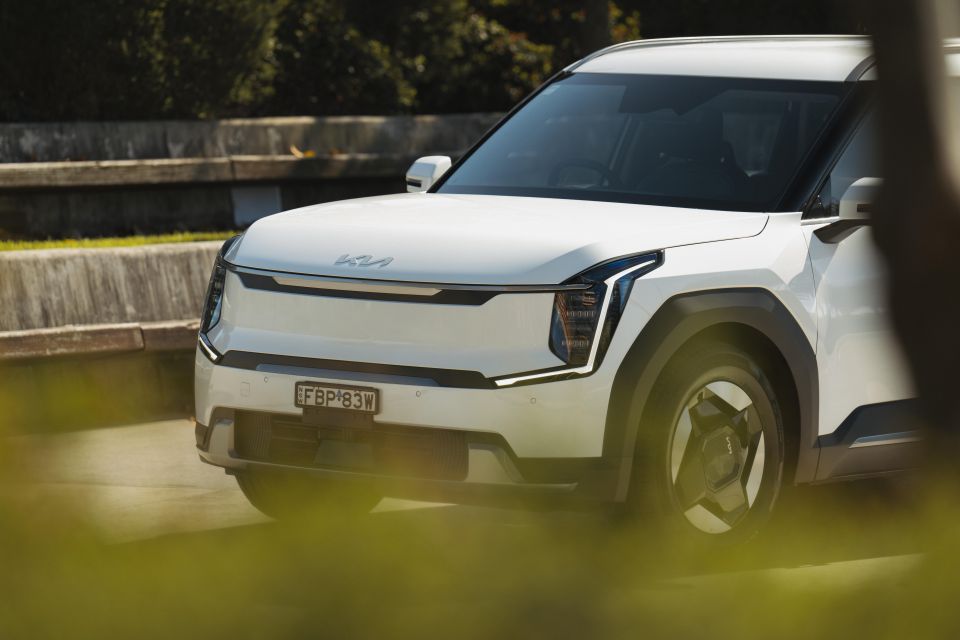
| Model | Price before on-road costs |
|---|---|
| 2024 Kia EV9 Air | $97,000 |
| 2024 Kia EV9 Earth AWD | $106,500 |
| 2024 Kia EV9 GT-Line AWD | $121,000 |
To see how the Kia EV9 lines up against the competition, check out our comparison tool.
If you thought the skateboard design of the EV9’s E-GMP architecture would mean class-leading space efficiency, you’d be wrong.
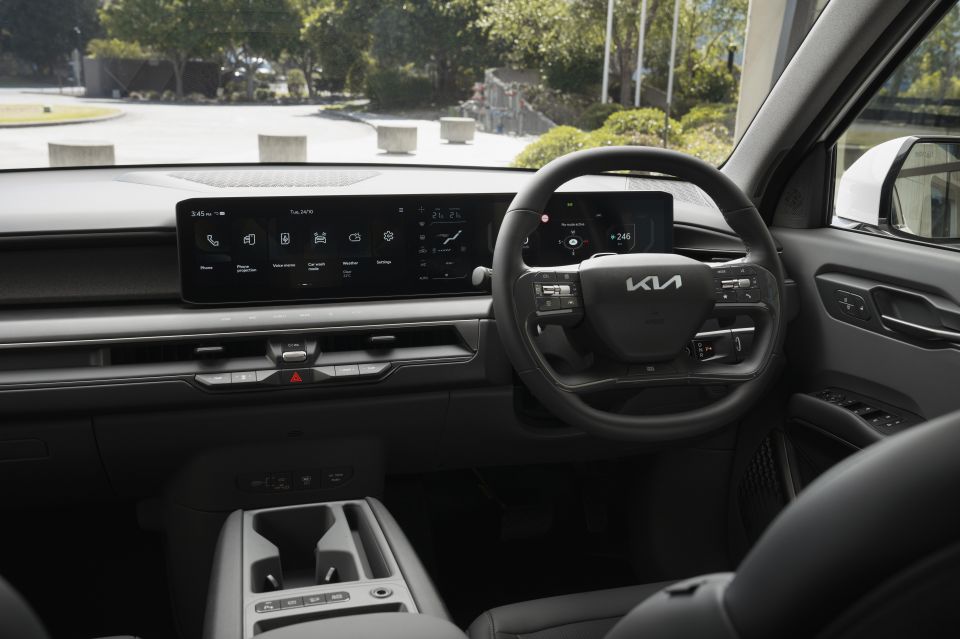
The third row doesn’t feel as spacious as in a Hyundai Palisade, and you’ll need to slide the second-row seats forward to fit adults back here. With the second row in its usual position, my knees were pressed firmly against their backs when I sat in the third row.
At least headroom is good, and there are plenty of amenities – roof-mounted air vents, a pair of USB-C outlets, and cupholders. Like the second row, it also reclines.
Despite this somewhat disappointing third row space, boot space behind the third row is 333L – fine for a three-row crossover, but not exceptional. Drop the third row and this expands to 828L, and then drop this and it expands to 2318L.
What the dedicated EV architecture does bring is a completely flat floor for the second row, which offers an abundance of legroom and headroom.
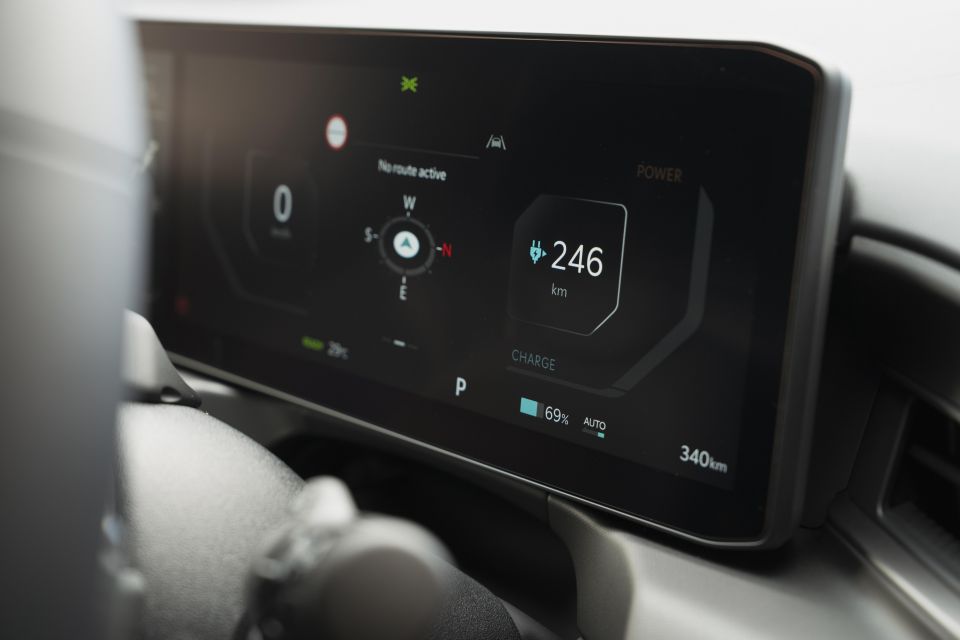
There are USB-C outlets on the front seatbacks, cupholders in the fold-down centre armrest, and air vents in the B-pillars, while there’s a cavernous (if dark) storage area at the rear of the centre console.
There are even controls on the side of the front passenger seat to allow second-row occupants to move it forward and backwards.
There are three top tether and two ISOFIX anchor points for child seats in the second row, plus top tether and ISOFIX points for the two rearmost seats. The latter isn’t something every large SUV can boast.
The EV9 doesn’t look like any other Kia inside. The use of smooth-grained, soft-touch plastics is reminiscent of the related Hyundai Ioniq 5. While this means it doesn’t look cheap, the EV9 also doesn’t look particularly luxe for something costing this much.
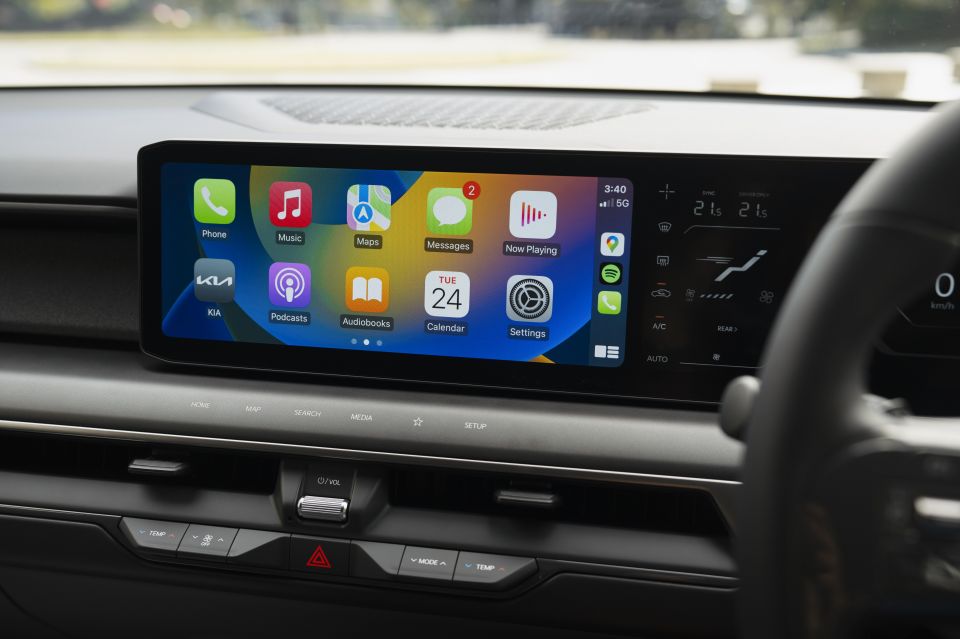
We’d also like to see some soft-touch trim for the sides of the centre console, where your knees make contact.
The dashboard is simple, with minimal physical switchgear. This includes a row of physical buttons for functions like the climate control, as well as a metallic roller wheel for audio volume.
There’s a split-level centre console, with a floating, high-mounted section featuring cupholders and a handful of switches, as well as a section effectively at floor level which is one big shelf with a rubberised surface.
The only thing that could make this better is if the centre console could slide back to allow occupants to cross from one side of the vehicle to the other, à la the pre-update Hyundai Ioniq 5.
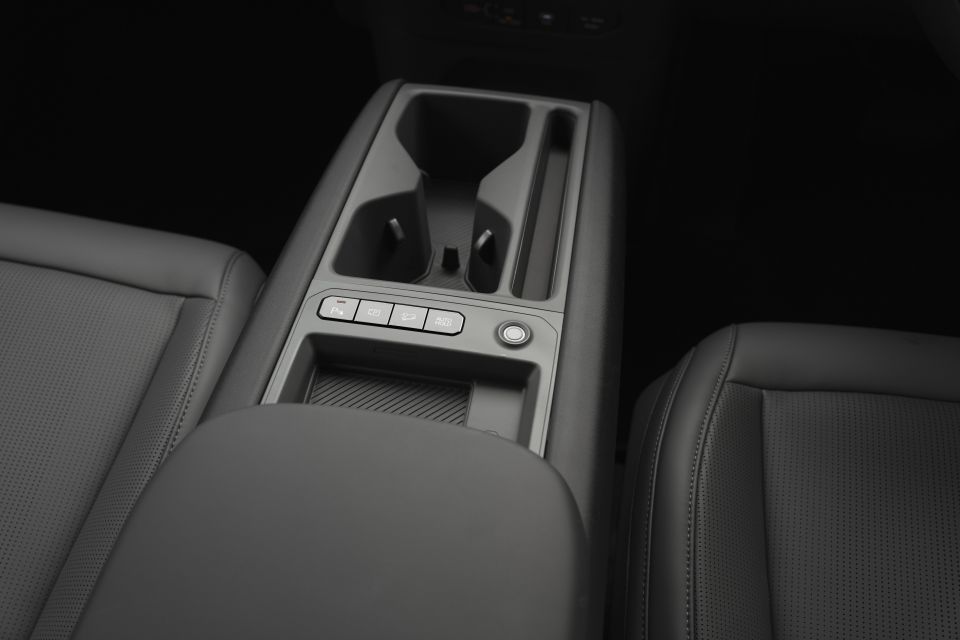
Material choices are generally good, such as the grey fabric headliner, dashboard garnish and metal-look accents, but the Air feels more austere than pricier EV9s with its grey-on-grey colour scheme and lack of colourful ambient lighting.
There are some neat details however, like the subtly patterned trim stretching across the dash that incorporates touch-capacitive shortcut buttons for functions like the satellite navigation, which feature haptic feedback.
It may lack features like ambient lighting, a head-up display and dual sunroofs, but the Air’s interior is still nicely equipped. You get heated and ventilated front seats and a heated steering wheel, while the screen setup is identical to more expensive EV9s.
That comprises a 12.3-inch touchscreen infotainment system and a 12.3-inch digital instrument cluster, with a 5.0-inch climate control touchscreen between them.
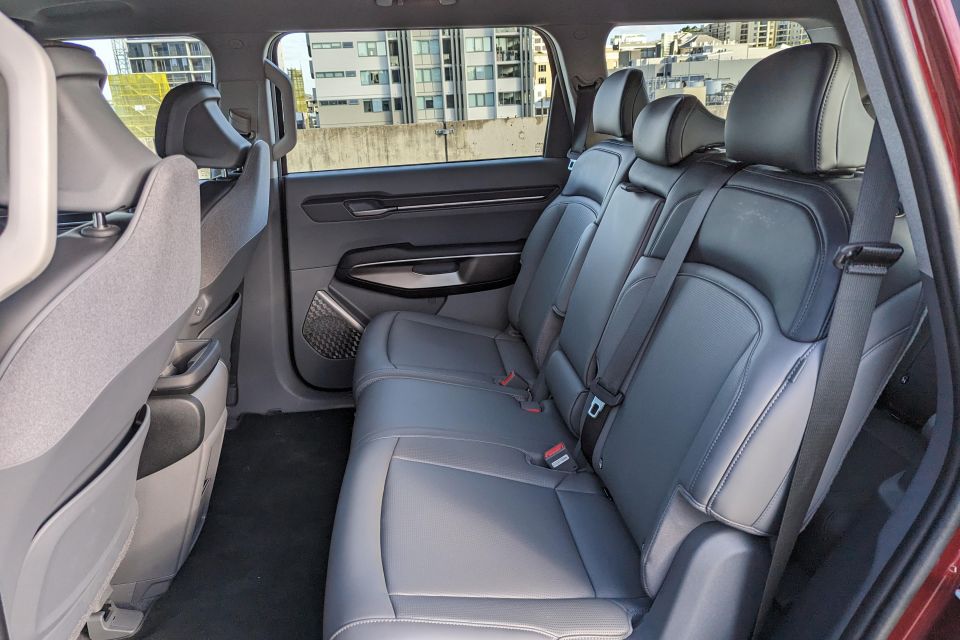

The climate screen is in an awkward spot, blocked by the steering wheel rim. While the digital instrument cluster has neat graphics, the different themes all look pretty much the same and there’s no map view available.
The infotainment system is more impressive, though we’re surprised you still need a cable to connect to Apple CarPlay and Android Auto. The graphics are attractive, response times quick, and menus intuitive.
There’s plenty of storage, headlined by a cavernous glovebox and an expansive shelf underneath the centre console. The flipside is the centre console bin is quite small, and we’d trade a little exposed storage for more concealed storage.
Two cupholders in the centre console can be retracted to form a more open storage area. Alternatively, you can conceal them beneath a roller cover.
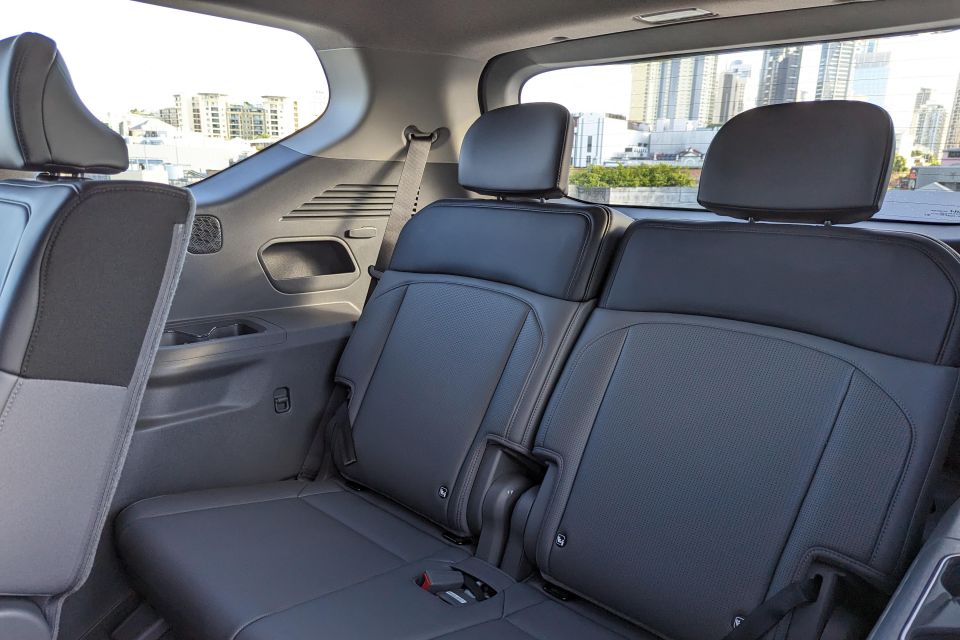
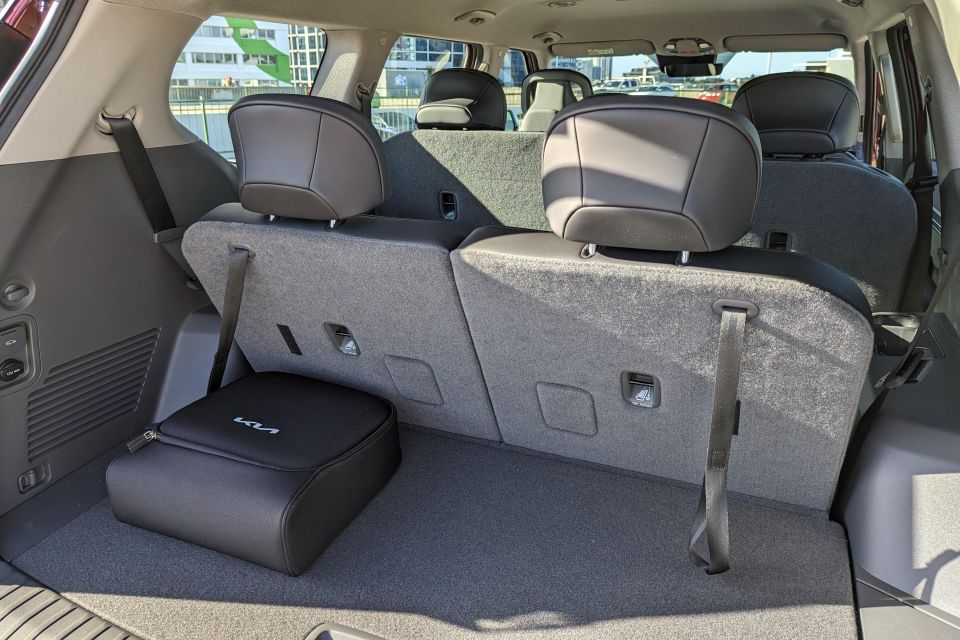
There’s an illuminated 90L storage space under the bonnet, 38L larger than other EV9s due to the absence of a front electric motor. It’s rated to carry 40kg, and includes an accessory net.
We’re disappointed there’s no spare tyre, with only a tyre mobility kit, but we’re delighted there’s vehicle-to-load (V2L) capability so you can, for example, use the car to charge your laptop.
| Dimensions | Kia EV9 Air |
|---|---|
| Length | 5010mm |
| Width | 1980mm |
| Height | 1755mm |
| Wheelbase | 3100mm |
| Ground clearance | 177mm |
| Cargo capacity | 333L (all seats up) 828L (third row stowed) 2318L (second and third rows stowed) 90L (under bonnet) |
To see how the Kia EV9 lines up against the competition, check out our comparison tool.
Kia doesn’t specify the maximum DC charge rate for the EV9, but says it will take 20 minutes to charge from 10 to 80 per cent on a 350kW charger. On a 50kW charger, it’ll take 63 minutes.
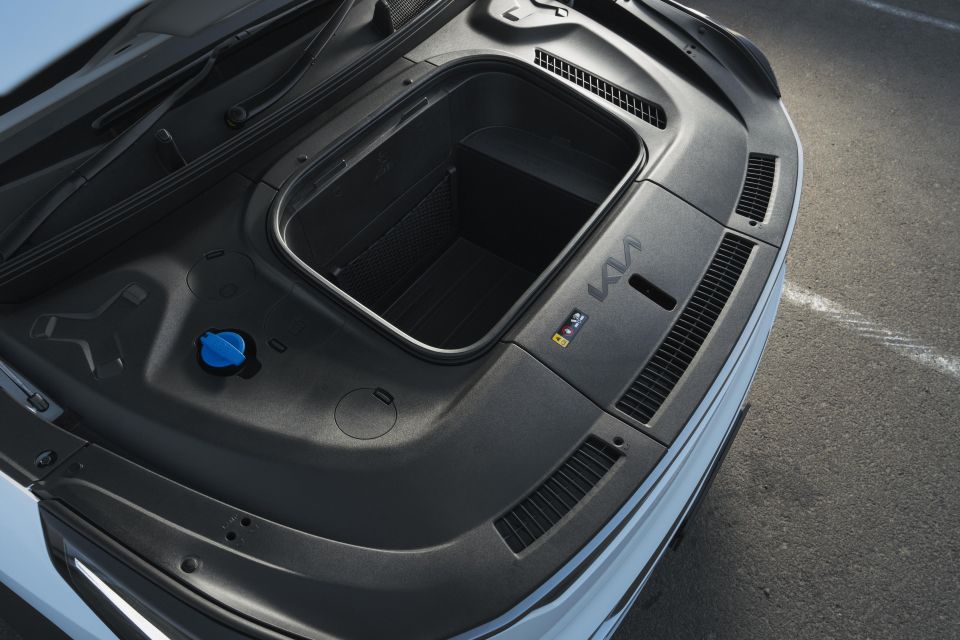
| Specifications | Kia EV9 Air |
|---|---|
| Drivetrain | Single-motor electric |
| Battery | 76.1kWh lithium-ion |
| Power | 160kW |
| Torque | 350Nm |
| Driven wheels | Rear-wheel drive |
| Weight | 2312kg (tare) |
| Braked towing capacity | 900kg |
| Unbraked towing capacity | 450kg |
| 0-100km/h (claimed) | 8.2 seconds |
| Power consumption (claimed) | 19.5kWh/100km |
| Power consumption (as tested) | 18.3kWh/100km (mixed loop) 17.6kWh/100km (after a week) |
| Claimed range | 443km (WLTP) |
| Max AC charge rate | 7kW (single-phase) 10.5kW (three-phase) |
To see how the Kia EV9 lines up against the competition, check out our comparison tool.
You can definitely notice the difference in performance between the rear-wheel drive Air and its all-wheel drive siblings.
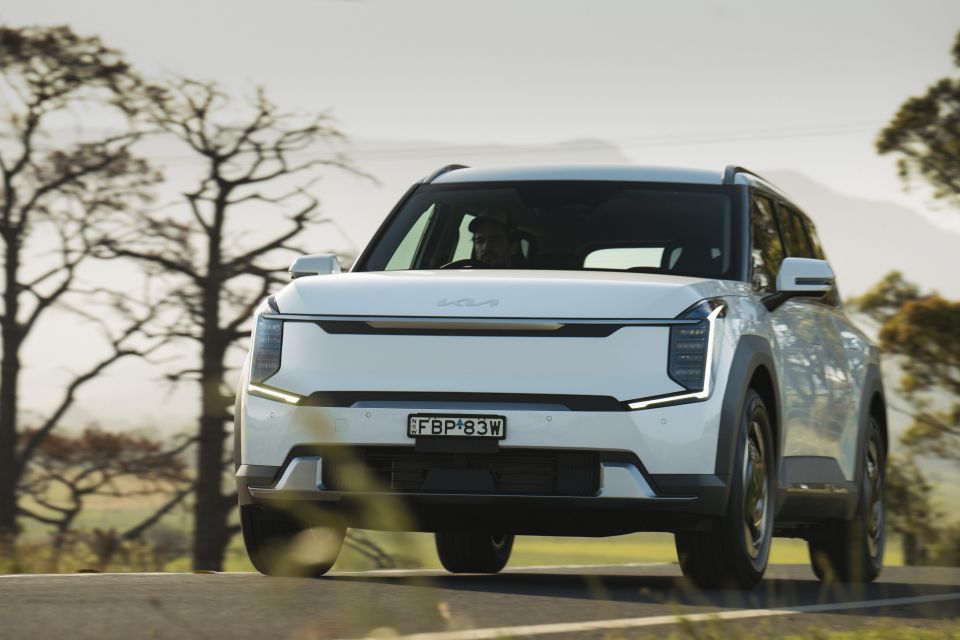
Where the GT-Line shoves you back in your seat, the Air is more sedate.
There’s still plenty of punch off the line – it is an electric vehicle after all. But the Air never feels particularly quick, something borne out by its 8.2-second 0-100km/h time.
Unfortunately, we didn’t get a chance to drive the EV9 with seven occupants on board to see how much this extra weight would stifle performance.
Nevertheless, it’s already a heavy beast – tare weight is 2312kg, with the battery alone weighing 463.3kg.
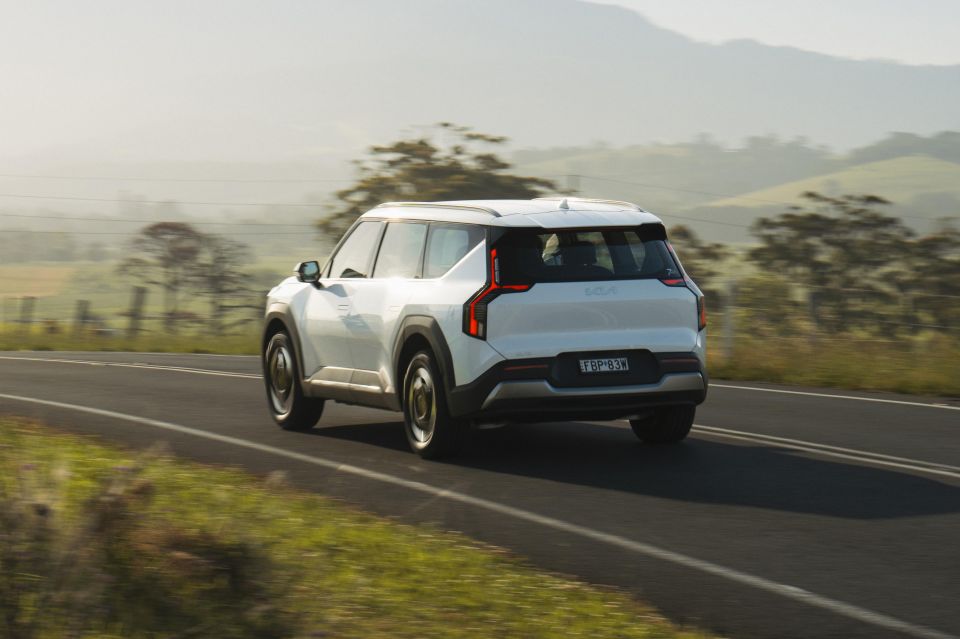
Given the GT-Line rides on massive 21-inch alloy wheels, we were expecting the Air to feel quite different in terms of ride quality as it rides on 19s.
We didn’t have any complaints about the ride in the GT-Line, but the presence of smaller wheels would suggest the Air might feel somewhat more pliant.
In reality, however, there’s little difference in ride quality between the two. There’s still good body control and an impressive lack of impact harshness. You’ll hear muffled thumps over bumps and ruts, but the ride isn’t upset by them.
Only when you get onto an unsealed road does it feel a bit more terse, but overall it’s still comfortable. Kia engineers have done an excellent job here, especially considering there’s no adaptive or air suspension on any EV9.
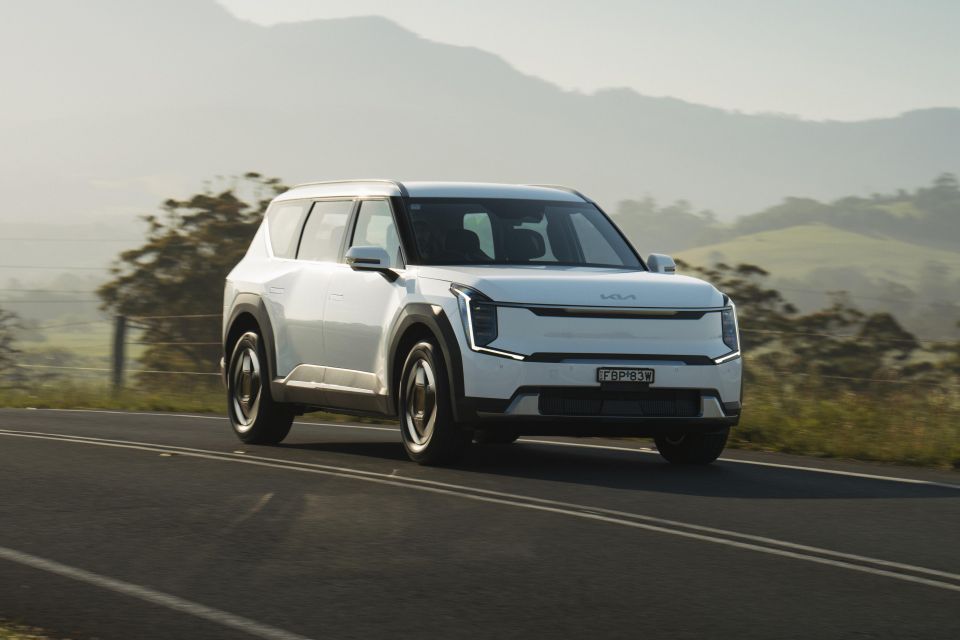
Where expert car reviews meet expert car buying – CarExpert gives you trusted advice, personalised service and real savings on your next new car.
Also impressive is the level of refinement. The cabin is lovely and quiet, proving nicely insulated from road noise even across coarse-chip surfaces.
This might be the size of a LandCruiser and weigh over two tonnes, but the EV9 is impressively nimble. The steering has a nice, progressive weighting to it, and the EV9 feels much smaller than its dimensions suggest.
There’s a one-pedal drive mode that can bring the vehicle to a complete stop once you let off the accelerator, but it’s not the most aggressive system around. It also has to be re-activated each time you start the vehicle, though this is done with a simple flick of a shift paddle.
The Air has the lowest range (but greatest energy efficiency) of any EV9. We saw energy consumption of 20-22kWh/100km in the GT-Line, but the Air was around 17-18kWh/100km.
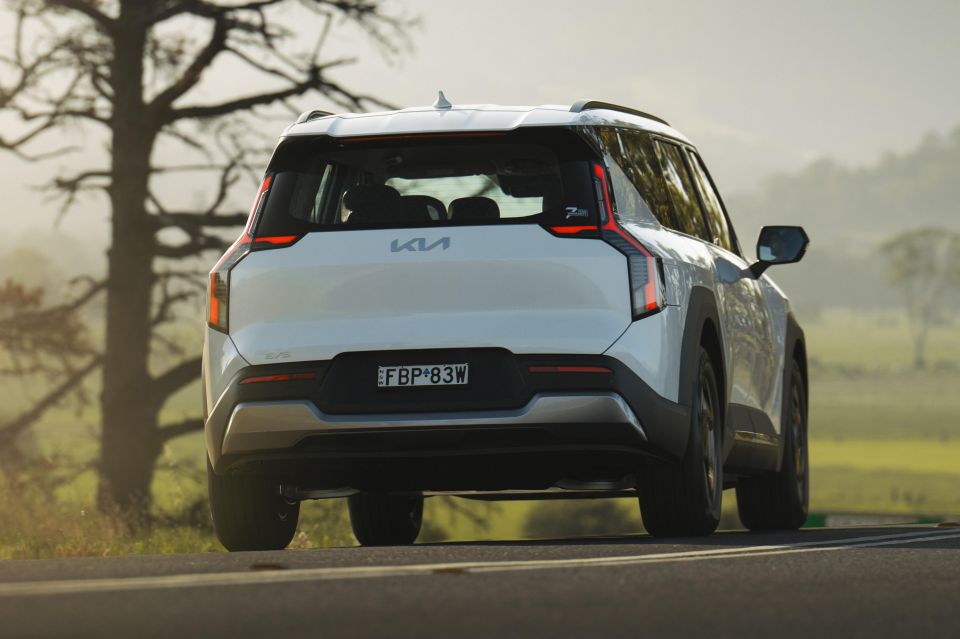
In terms of the driver assist systems, the driver attention monitoring proved generally accurate at detecting when I looked away, while the lane support systems are among the most proficient but also the most assertive out there.
The overspeed alert is annoying and defaults to on every single time you turn on the vehicle. While you can program a shortcut button on the steering wheel to take you to the menu to deactivate it, it’s still an absolute pain.
The solution in the updated Hyundai Tucson – where you can just hold down a steering wheel button to turn it off – is being rolled out as an OTA update to the EV9 and other members of the Kia range.
It’s disappointing the Air foregoes some items found in the Earth and GT-Line.

We’d understand Kia has to give a reason to step up to those models, besides the extra power and all-wheel drive, but the absence of a surround-view camera on a $97,000 vehicle grates. The Air also does without Kia’s clever Blind Spot View Monitor.
A surround-view camera, instead of a simple reversing camera, would make the EV9 Air easier to park. And this big bus already has a long wheelbase working against it in that respect. Despite sufficiently light steering, the EV9 is still a bit awkward in a carpark.
The Air is the entry-level model in the EV9 range.
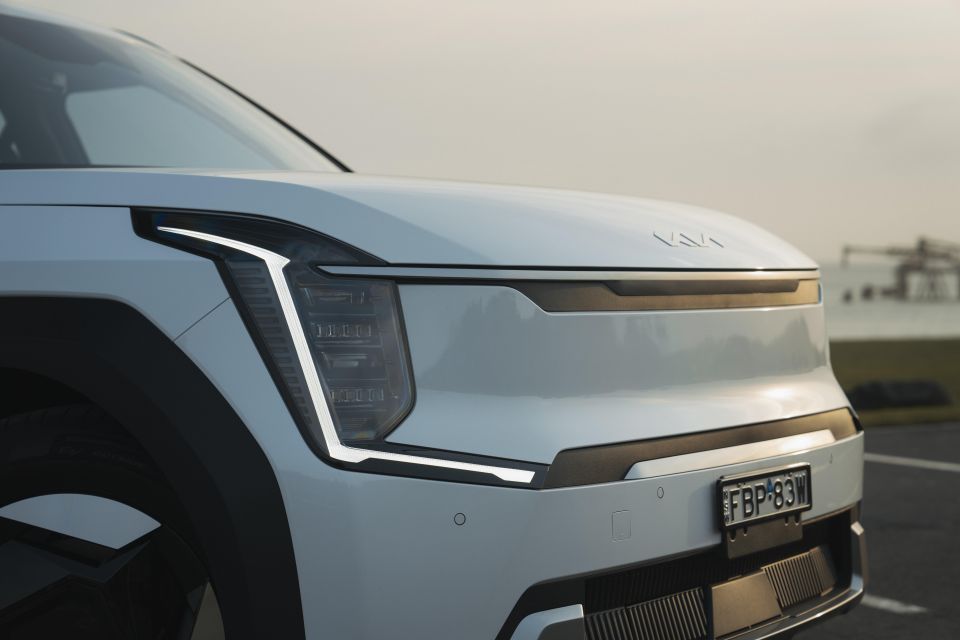

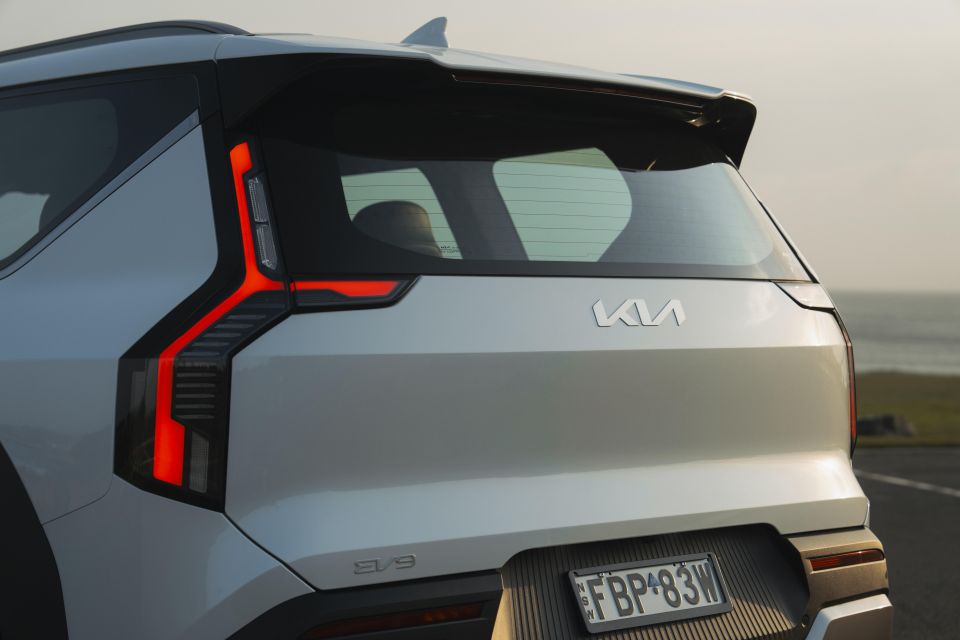

EV9 Air highlights:
The Kia EV9 has a five-star safety rating from ANCAP with a 2023 date stamp.

| Category | Kia EV9 |
|---|---|
| Adult occupant protection | 33.65 out of 40 (84 per cent) |
| Child occupant protection | 42.65 out of 49 (87 per cent) |
| Vulnerable road user protection | 48.42 out of 63 (76 per cent) |
| Safety assist | 15.43 out of 18 (85 per cent) |
Standard safety equipment across the range includes:
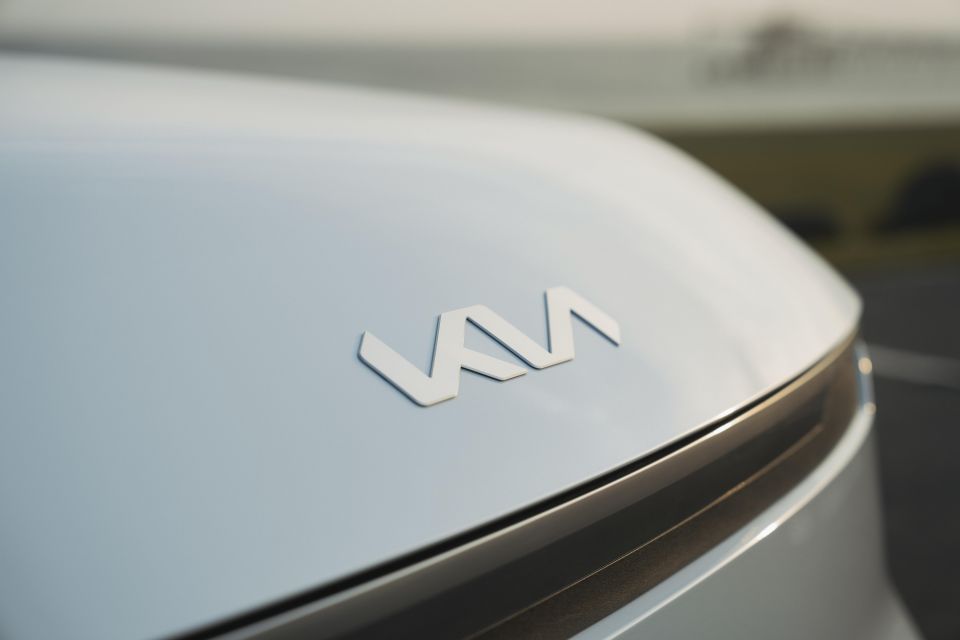
| Running costs | Kia EV9 Air |
|---|---|
| Warranty | 7 years, unlimited kilometres (vehicle) 7 years, 150,000km (battery, electric motor) |
| Service intervals | 12 years or 15,000km |
| Capped-price servicing | 3-, 5- or 7-year pre-paid plans |
| Total capped-price service cost | $706 (3 years) $1351 (5 years) $1997 (7 years) |
The Kia EV9 Air makes a pretty compelling case for itself.
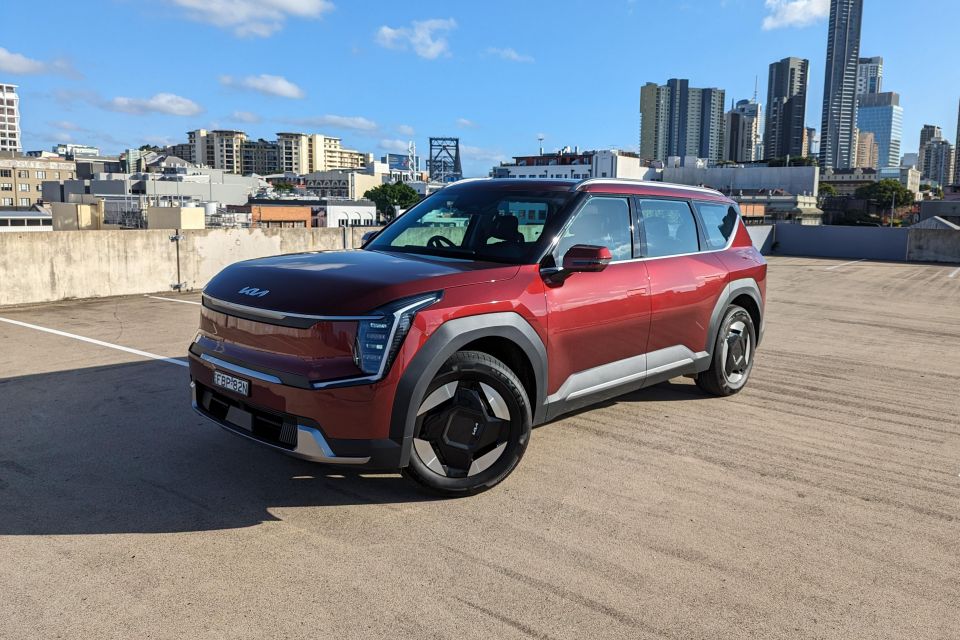
It’s nowhere near price parity with similarly sized combustion-powered SUVs – even the most expensive Hyundai Palisade is under $80,000 before on-roads. If you’re not set on going EV, then that may be a deal breaker.
Compare it to other electric SUVs or even other EV9s, though, and it looks great. Other three-row electric SUVs are either much smaller or much, much pricier.
While other EV9s add more performance and features, the Air is pretty solid on both counts though we wish it had a surround-view camera.
Yes the EV9’s third row could also be larger and its price lower, but we came away impressed with the way this drives despite its modest outputs.
Those concept car looks also make the EV9 stand out in a good way, which should help it remain in contention with buyers when rival brands finally enter the segment.

Interested in buying a Kia EV9? Get in touch with one of CarExpert’s trusted dealers here
Click the images for the full gallery
MORE: Everything Kia EV9
Where expert car reviews meet expert car buying – CarExpert gives you trusted advice, personalised service and real savings on your next new car.
William Stopford is an automotive journalist based in Brisbane, Australia. William is a Business/Journalism graduate from the Queensland University of Technology who loves to travel, briefly lived in the US, and has a particular interest in the American car industry.


Max Davies
5 Days Ago


Josh Nevett
4 Days Ago


Andrew Maclean
3 Days Ago


Shane O'Donoghue
3 Days Ago


Anthony Crawford
2 Days Ago
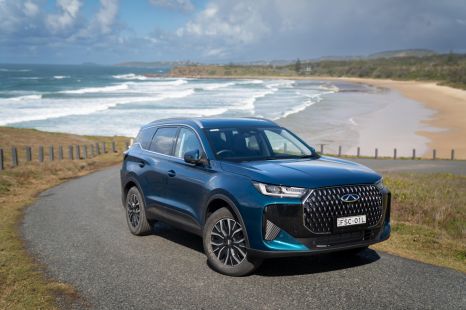

Andrew Maclean
1 Day Ago